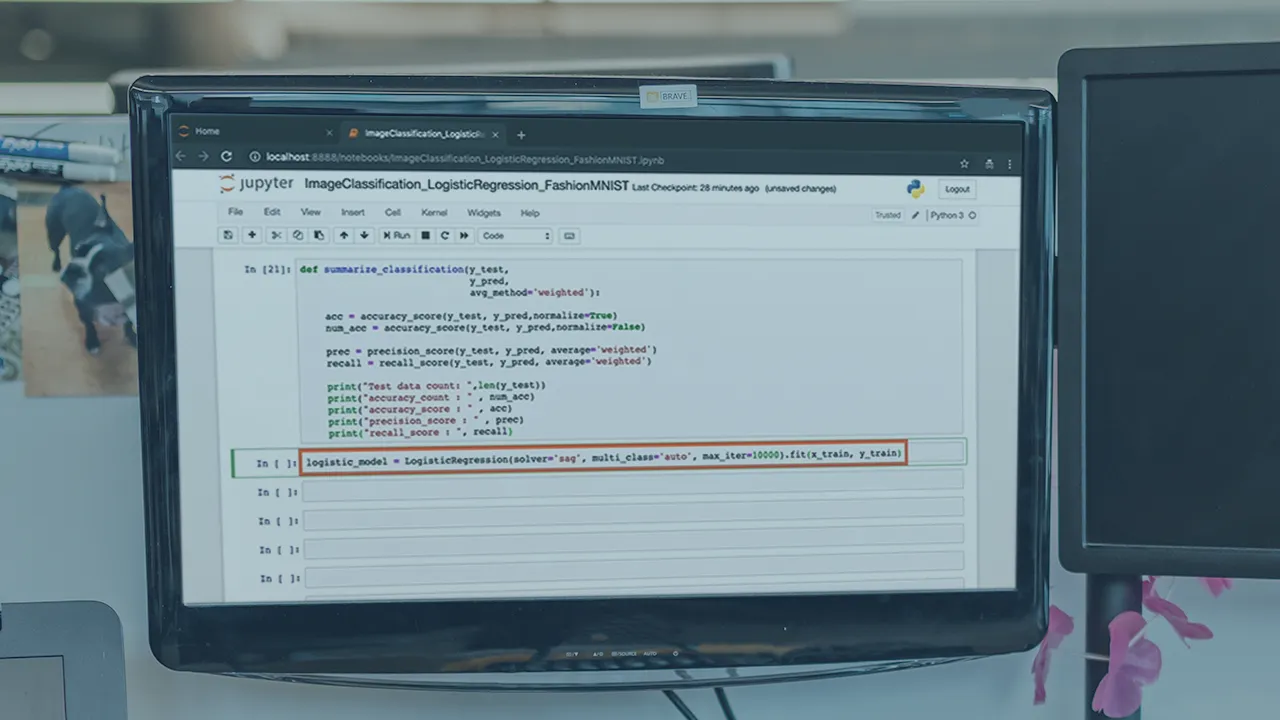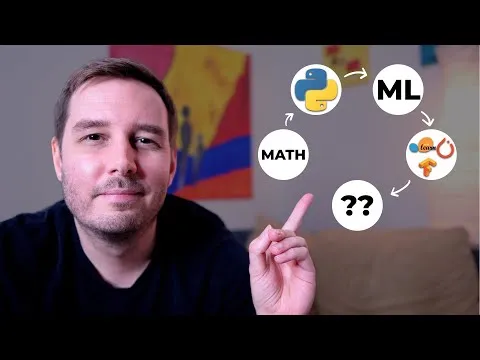
Building Classification Models with scikit-learn 
This course provides an introduction to the fundamentals of building classification models with scikit-learn. It covers topics such as supervised learning, decision trees, logistic regression, and support vector machines. ▼
ADVERTISEMENT
Course Feature
![]() Cost:
Cost:
Free Trial
![]() Provider:
Provider:
Pluralsight
![]() Certificate:
Certificate:
No Information
![]() Language:
Language:
English
![]() Start Date:
Start Date:
Self Paced
Course Overview
❗The content presented here is sourced directly from Pluralsight platform. For comprehensive course details, including enrollment information, simply click on the 'Go to class' link on our website.
Updated in [March 06th, 2023]
1. Understanding Classification: Learners can gain an understanding of what classification seeks to achieve, and how to evaluate classifiers using accuracy, precision, recall, and ROC curves.
2. Implementing Classification Techniques: Learners can learn how to implement various classification techniques such as logistic regression, and Naive Bayes classification.
3. Advanced Classification: Learners can explore more advanced forms of classification, including those using Support Vector Machines, Decision Trees and Stochastic Gradient Descent.
4. Optimizing Hyperparameters: Learners can understand the hyperparameters that various classification models possess, and how these can be optimized.
[Applications]
The application of this course can be seen in a variety of areas. For example, it can be used to build models for predicting customer churn, classifying images, or predicting the likelihood of a customer making a purchase. Additionally, the course can be used to build models for predicting the likelihood of a customer defaulting on a loan, or for predicting the likelihood of a customer responding to a marketing campaign. Finally, the course can be used to build models for predicting the likelihood of a customer responding to a particular advertisement.
[Career Paths]
Career Paths:
1. Data Scientist: Data Scientists use a variety of techniques to analyze data and develop predictive models. They use scikit-learn to build classification models and use them to make predictions. Data Scientists also use other machine learning algorithms to develop models and interpret results. The demand for Data Scientists is increasing as businesses become more data-driven.
2. Machine Learning Engineer: Machine Learning Engineers use scikit-learn to build and deploy machine learning models. They use the library to develop and optimize classification models, and to deploy them in production. They also use other machine learning algorithms to develop models and interpret results.
3. Artificial Intelligence Engineer: Artificial Intelligence Engineers use scikit-learn to build and deploy AI models. They use the library to develop and optimize classification models, and to deploy them in production. They also use other machine learning algorithms to develop models and interpret results. AI Engineers are in high demand as businesses look to leverage AI to gain a competitive edge.
Developing Trends:
1. Automation: Automation is becoming increasingly important in the development of classification models. Automated machine learning (AutoML) tools are being used to automate the process of building and optimizing classification models.
2. Deep Learning: Deep learning is becoming increasingly popular for classification tasks. Deep learning models are being used to build more accurate and robust classification models.
3. Cloud Computing: Cloud computing is becoming increasingly important for the development and deployment of classification models. Cloud computing platforms are being used to build and deploy classification models at scale.
[Education Paths]
Recommended Degree Paths:
1. Bachelor of Science in Computer Science: This degree path provides students with a comprehensive understanding of computer science fundamentals, including algorithms, data structures, programming languages, operating systems, and software engineering. It also covers topics such as artificial intelligence, machine learning, and natural language processing. This degree path is ideal for those interested in developing classification models with scikit-learn, as it provides the necessary foundation for understanding the algorithms and techniques used in the course.
2. Master of Science in Data Science: This degree path focuses on the application of data science techniques to solve real-world problems. It covers topics such as data mining, machine learning, and predictive analytics. This degree path is ideal for those interested in developing classification models with scikit-learn, as it provides the necessary skills and knowledge to apply the algorithms and techniques used in the course to real-world problems.
3. Master of Science in Artificial Intelligence: This degree path focuses on the development of intelligent systems and their applications. It covers topics such as machine learning, natural language processing, and computer vision. This degree path is ideal for those interested in developing classification models with scikit-learn, as it provides the necessary skills and knowledge to apply the algorithms and techniques used in the course to intelligent systems.
Developing Trends:
1. Automated Machine Learning: Automated machine learning (AutoML) is an emerging trend in the field of machine learning. AutoML is a process of automating the development of machine learning models, including those used for classification. This trend is becoming increasingly popular, as it allows developers to quickly and easily develop classification models with scikit-learn.
2. Deep Learning: Deep learning is a subset of machine learning that uses artificial neural networks to learn from data. Deep learning is becoming increasingly popular, as it allows developers to develop more accurate and complex classification models with scikit-learn.
3. Natural Language Processing: Natural language processing (NLP) is a field of artificial intelligence that focuses on understanding and processing human language. NLP is becoming increasingly popular, as it allows developers to develop more accurate and complex classification models with scikit-learn.
Course Provider

Provider Pluralsight's Stats at AZClass
Pluralsight ranked 16th on the Best Medium Workplaces List.
Pluralsight ranked 20th on the Forbes Cloud 100 list of the top 100 private cloud companies in the world.
Pluralsight Ranked on the Best Workplaces for Women List for the second consecutive year.
AZ Class hope that this free trial Pluralsight course can help your Machine Learning skills no matter in career or in further education. Even if you are only slightly interested, you can take Building Classification Models with scikit-learn course with confidence!
Discussion and Reviews
0.0 (Based on 0 reviews)
Explore Similar Online Courses

Flourished Calligraphy Layouts in Procreate

Story telling for Early Childhood Period - Montessori way

Python for Informatics: Exploring Information

Social Network Analysis

Introduction to Systematic Review and Meta-Analysis

The Analytics Edge

DCO042 - Python For Informatics

Causal Diagrams: Draw Your Assumptions Before Your Conclusions

Whole genome sequencing of bacterial genomes - tools and applications

How I would learn Machine Learning (if I could start over)

Learn Data Science and Machine Learning on Microsoft Azure

Machine Learning for Everyone
 Related Categories
Related Categories
Quiz
 Submitted Sucessfully
Submitted Sucessfully
1. Which of the following is not a classification technique?
2. Which of the following is a metric used to evaluate classifiers?
3. Which of the following is not a hyperparameter?


Start your review of Building Classification Models with scikit-learn